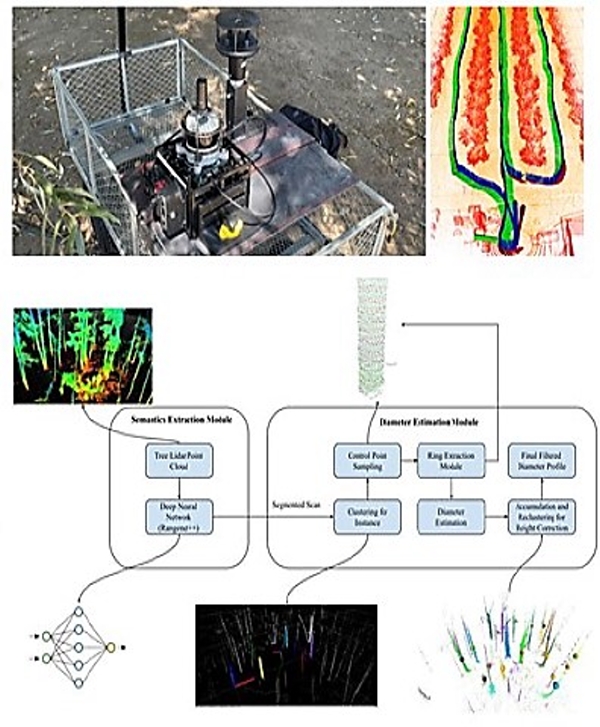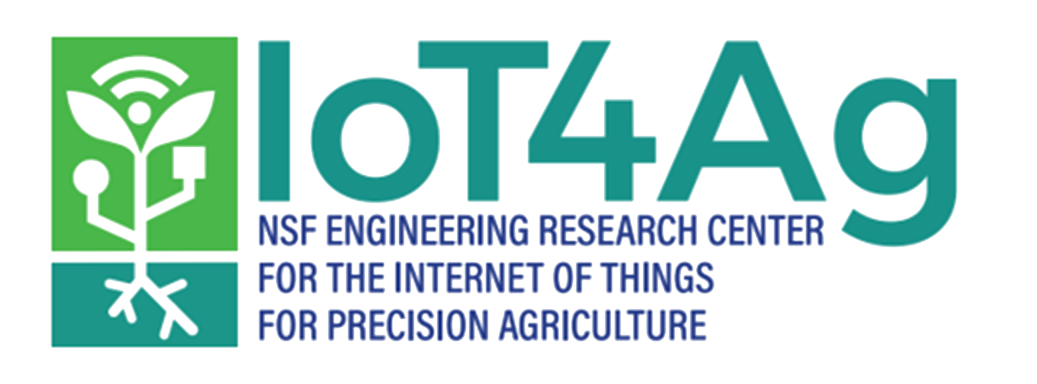Robots As Future Foresters and Farmers
Outcome/Accomplishment
Data is essential for healthy forestry and agricultural crops. Now, researchers are developing sophisticated systems that combine high-quality sensor data with human-annotated visual information to get the best results. This work is sponsored by the U.S. National Science Foundation (NSF)-funded Internet of Things for Precision Agriculture (NSF IoT4Ag) Engineering Research Center (ERC) headquartered at the University of Pennsylvania (Penn).
Impact/Benefits
The NSF IoT4Ag researchers assembled a comprehensive dataset composed of high-quality sensor data collected from multiple orchards and forests using diverse platforms, such as sensor towers and drones, as well as human-annotated (semantic) data. Combined, this dataset is a valuable tool for evaluating tree diameter estimation across different crop types (such as pistachios, almonds, and pine forests.) The algorithms and systems developed allow the autonomous collection of accurate metrics, such as diameter and stem taper profile, and help forestry researchers administer effective silviculture treatments. Importantly, by open-sourcing the autonomous drone navigation and mapping code, the research significantly lowers the barrier of entry for researchers to deploy autonomous robots in agricultural fields.
Explanation/Background
This research involved several specific accomplishments. The researchers developed a deep-learning-driven pipeline for estimating tree trunk diameters, generating a full stem-taper profile and diameter-at-breast-height measurements. They created multi-robot, collaborative metric-semantic mapping and map-merging algorithms and tested them in forest environments. They also built and tested their autonomous drone system, capable of long-range, Light Detection and Ranging (LiDAR) remote sensing navigation in cluttered, 3D environments.
Location
Philadelphia, Pennsylvaniawebsite
Start Year
Microelectronics and IT
Microelectronics, Sensing, and IT
Lead Institution
Core Partners
Fact Sheet
Outcome/Accomplishment
Data is essential for healthy forestry and agricultural crops. Now, researchers are developing sophisticated systems that combine high-quality sensor data with human-annotated visual information to get the best results. This work is sponsored by the U.S. National Science Foundation (NSF)-funded Internet of Things for Precision Agriculture (NSF IoT4Ag) Engineering Research Center (ERC) headquartered at the University of Pennsylvania (Penn).
Location
Philadelphia, Pennsylvaniawebsite
Start Year
Microelectronics and IT
Microelectronics, Sensing, and IT
Lead Institution
Core Partners
Fact Sheet
Impact/benefits
The NSF IoT4Ag researchers assembled a comprehensive dataset composed of high-quality sensor data collected from multiple orchards and forests using diverse platforms, such as sensor towers and drones, as well as human-annotated (semantic) data. Combined, this dataset is a valuable tool for evaluating tree diameter estimation across different crop types (such as pistachios, almonds, and pine forests.) The algorithms and systems developed allow the autonomous collection of accurate metrics, such as diameter and stem taper profile, and help forestry researchers administer effective silviculture treatments. Importantly, by open-sourcing the autonomous drone navigation and mapping code, the research significantly lowers the barrier of entry for researchers to deploy autonomous robots in agricultural fields.
Explanation/Background
This research involved several specific accomplishments. The researchers developed a deep-learning-driven pipeline for estimating tree trunk diameters, generating a full stem-taper profile and diameter-at-breast-height measurements. They created multi-robot, collaborative metric-semantic mapping and map-merging algorithms and tested them in forest environments. They also built and tested their autonomous drone system, capable of long-range, Light Detection and Ranging (LiDAR) remote sensing navigation in cluttered, 3D environments.

